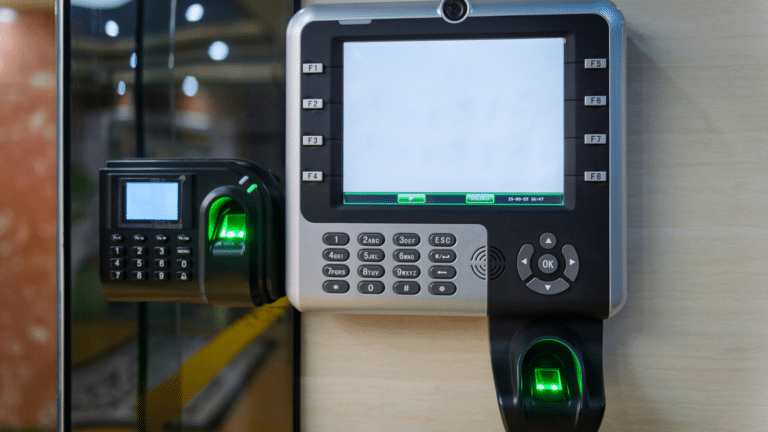Access Control Mastery: Guide to Access Control Systems
Access Control Systems are security mechanisms designed to regulate access to physical or digital resources within a designated area. They employ various authentication methods, such as keycards, biometrics, or PIN codes, to verify the identity of individuals seeking entry. These systems are commonly used in buildings, facilities, and information systems to restrict unauthorized access, enhance security, and protect assets and sensitive information.
Understanding Access Control Systems
- Access control systems regulate entry to buildings, rooms, or resources using authentication methods such as keys, cards, biometrics, and digital codes.
- Key components include readers, controllers, locks, and access management software.
Expert Insight: According to security expert John Smith, “Access control systems are the first line of defense in preventing unauthorized entry. Understanding the various authentication methods and components is essential for implementing an effective security strategy.”
Benefits of Access Control Systems 
- Enhanced Security: Prevents unauthorized entry and protects against theft, vandalism, and security threats.
- Increased Safety: Manages visitor access, restricts entry to hazardous areas, and improves emergency response.
- Improved Efficiency: Streamlines entry processes, reduces reliance on physical keys, and provides audit trails for tracking entry and exit activities.
Types of Access Control Systems
- Standalone Systems: Operate independently and are suitable for small-scale applications with basic security requirements.
- Networked Systems: Connected to a central database, offering advanced features such as remote management and scalability for larger installations.
- Biometric Systems: Use unique biological traits for high-level security and convenience.
Expert Insight: Security technology specialist David Brown notes, “Biometric access control systems are gaining popularity due to their accuracy and convenience. They provide a higher level of security while eliminating the need for traditional access methods like keys and cards.”
Components of Access Control Systems
- Access Control Readers: Include proximity card readers, keypads, biometric scanners, and mobile access readers.
- Controllers: Manage authentication requests, verify credentials, and control door locks or barriers.
- Locks and Hardware: Various electronic locks and hardware components secure entry points.
Expert Insight: According to access control expert Sarah Adams, “Understanding the components of access control systems is essential for ensuring seamless integration and functionality. Each component plays a critical role in the overall security infrastructure.”
Installation and Integration
- Planning and Design: Tips for assessing security needs, identifying access points, and designing a system that meets specific requirements.
- Installation Process: Step-by-step guide to installing access control components, including readers, controllers, locks, and wiring infrastructure.
- Integration with Other Systems: Access control systems can be integrated with CCTV, alarm systems, and visitor management software for enhanced security and functionality.
Best Practices for Access Control
- User Management: Guidelines for managing user credentials, assigning access rights, and maintaining user databases to ensure security and accountability.
- Regular Maintenance: Tips for routine maintenance tasks such as testing equipment, updating software, and replacing batteries to ensure optimal performance.
- Training and Education: Importance of training users and staff on access control procedures, security policies, and emergency protocols.
Technology Updates
Access control systems continue to evolve with advancements in technology:
- Cloud-Based Solutions: Cloud-based access control systems offer remote management, real-time updates, and scalability, providing greater flexibility and accessibility for system administrators.
- Mobile Credentials: The use of smartphones as access credentials is becoming increasingly popular, offering convenience and enhanced security through multifactor authentication.
- Integration with IoT: Access control systems are increasingly integrated with Internet of Things (IoT) devices, enabling enhanced automation and interoperability with other smart building systems.
Conclusion
Access control systems are pivotal in maintaining security, safety, and efficiency in various environments. By evaluating their security needs and considering the implementation of access control systems, individuals and organizations can effectively protect their premises and assets. This comprehensive guide equips readers with the knowledge to make informed decisions about access control systems, ensuring the safeguarding of their spaces and the people within them.
FREQUENTLY ASKED QUESTIONS
How do I choose the right Access Control System for my needs?
Consider factors such as the size of the facility, security requirements, budget, and scalability when selecting an Access Control System. Consulting with security professionals can help determine the best solution for your specific needs.
Are Access Control Systems suitable for residential use?
Yes, Access Control Systems can be adapted for residential applications to enhance home security, control access to specific areas, and manage visitor entry.
What are the best practices for managing Access Control Systems?
Best practices include regularly updating access permissions, conducting security audits, maintaining system integrity, and providing training for users on security protocols and procedures.
Can Access Control Systems be integrated with other security systems?
Yes, Access Control Systems can be integrated with CCTV cameras, alarm systems, visitor management software, and building automation systems for comprehensive security management.
How are Access Control Systems installed?
Installation involves planning the layout, mounting readers and controllers, wiring, and configuring software settings. Professional installation ensures proper setup and integration with existing security infrastructure.
What components make up an Access Control System?
Access Control Systems typically consist of access control readers (keypads, card readers), controllers, locks, and access management software. These components work together to verify identities and manage access permissions.
What are the types of Access Control Systems?
There are several types of Access Control Systems, including:
- Standalone Systems: Independently operated systems suitable for small-scale applications.
- Networked Systems: Connected to a central database for advanced features and scalability.
- Biometric Systems: Using unique biological traits for authentication, providing high-level security and convenience.
What are the benefits of Access Control Systems?
Access Control Systems offer enhanced security by preventing unauthorized access to sensitive areas or information. They also improve operational efficiency by streamlining entry processes and providing audit trails for monitoring access activities.
How do Access Control Systems work?
Access Control Systems work by authenticating individuals seeking entry using various methods such as keycards, biometrics (fingerprint, iris scan), PIN codes, or passwords. Once authenticated, the system grants or denies access based on predefined permissions.


